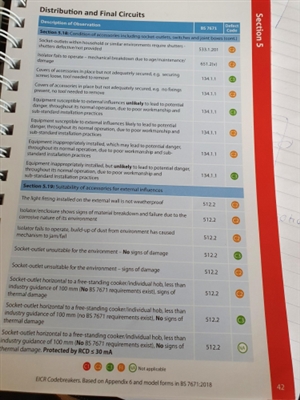Hi
Working on a property today and one of the issues was a PIR light not working, this was resoled by bending the lamp connections. But I noticed the lense on the on the PIR was old and cracked, trying to make my mind up between C2 and C3. Owners are selling soon and the property hasn't been touched for 16 years and will need some renovation by the next owners.
The light is at about 3m and out of reach, earthed and protected by an RCD. It's a halogen light therefore presumably the PIR is switching 240V and the PIR is at the bottom, I suspect if any water does enter it will run out before getting to the electrics. The electrics certainly seemed to be working, I didn't dig too deep as I suspect it would have lead to the lense breaking.
Looking at NAPIT code breakers below the crux of the matter is, is it likely to lead to potential danger. Given the above I am leaning towards it being unlikely to cause potential danger and a C3.
What are your opinions?
Thanks
Alan


